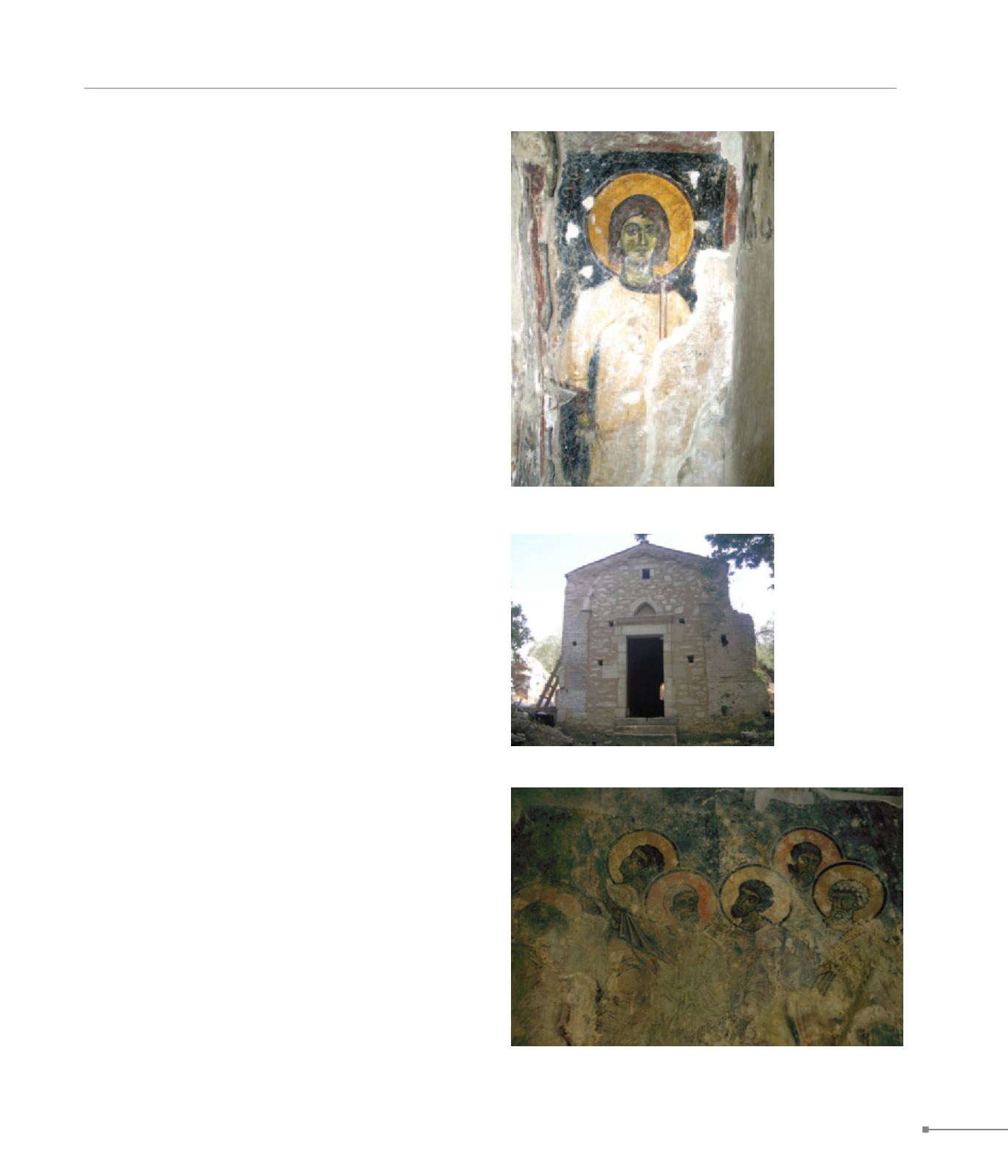
Patima.
Argyroupolis.
CRETE
255
390. Argyroupolis,
Aghia Kyriake
(Αργυρούπολη, Αγία
Κυριακή)
390. Argyroupolis, Aghia Kyriake, wall painting (Αργυρούπολη, Αγία
Κυριακή, τοιχογραφία)
387. Kournas,
Saint George,
wall painting
of the second
layer (Κουρνάς,
Άγιος Γεώργιος,
τοιχογραφία
β΄στρώματος)
388.
Patima.
In the centre of Patima is the barrel-vaulted, single-nave church
of Aghioi Theodoroi with wall-paintings of the 15th c. and a
tomb. The village features the remains of Venetian structures.
389.
Episkopi.
At the Fountana site, near the river Mouselas, remnants of an
Early Christian basilica with mosaic floors have been discov-
ered. During the Mid-Byzantine and Early Venetian rule peri-
ods, this was the see of Lappa, which had been transferred
from the neighbouring ancient city of Lappa and was renamed
the see of Kalamonas. Sources also mention “Tourma Kala-
monos”. In the middle of the village survive the remains of
the large episcopal church: cross-in-square, with dome and
narthex embedded in later houses.
390.
Argyroupolis.
Built on the site of the important ancient city of Lappa (which
became the Early Christian see of Lappa), Argyroupolis fea-
tures a significant number of monuments from various peri-
ods. In the past a basilica was excavated whose mosaic floors,
with hunting scenes, have been removed and are kept at the
storehouses of the 28th Ephorate of Byzantine Antiquities,
while it seems that beneath the church of Aghia Paraskevi
was a large three-aisled basilica. In the countryside stands the
barrel-vaulted, single-nave church of Aghia Kyriake, which oc-
cupies the site of a large Roman bath house whose brick walls
troduced, and in the interior the two arcades and the S wall
were replaced by large arches. Wall-paintings have been re-
vealed in four layers. The first layer covers the surfaces of the
three-aisled basilica and dates from the late 12th c. The sec-
ond, which extends to the nave dedicated to Christ, is from
the fourth decade of the 13th c. The third layer is dated to the
late 13th c. and covers the original decoration of the conch,
and the fourth, of the early 14th c., covers the Deesis of the
original church. W of Saint George is the aisleless church of
Aghia Irene with good quality wall-paintings (1361-2). In Kour-
nas there is the barrel-vaulted, single-nave church of Panagia
with remnants of wall-paintings dating from the 15th c.


